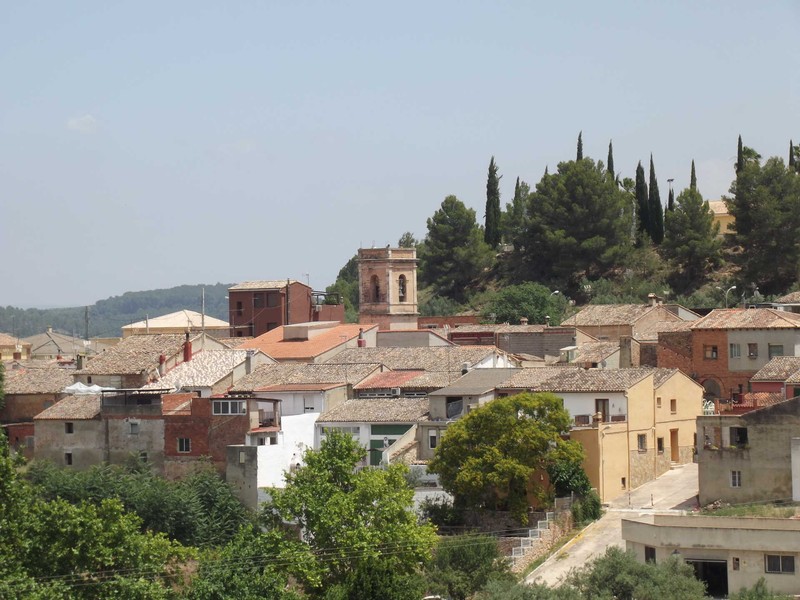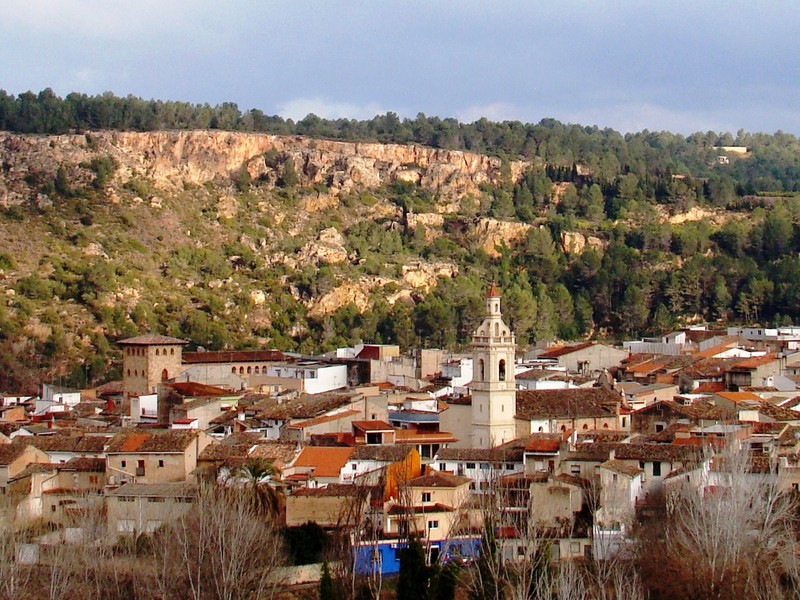Pico Caroche (Bicorp)
The Caroche or Caroig peak is a mountain of 1,126 meters, located in Teresa de Cofrentes, Spain. It is situated
The hill where the ‘Las Simicas’ site is located is made up of clayey limestones and dolomites deposited during the Middle Triassic period, between 247 and 235 million years ago. These Triassic materials constitute the oldest deposits that outcrop in the La Canal de Navarrés depression. Subsequently, during the Cenozoic-Tertiary (66 million years ago), compressive forces occurred during the Alpine orogeny, resulting in the fold that originated the mountain, faults, and joints, following a NW-SE arrangement parallel to the fault axes of the region. The sinkholes in this area are arranged in the same direction.
Along the hill traversed by the PR-CV 113 from Chella to Fuente Negra, a total of 7 sinkholes are found in the T.M. Chella. The largest one is called sinkhole 1, with a collapse area of 8,140 m2 and a maximum sinking depth of 50.4 m.
Next to it, sinkhole 2 with an elongated and irregular area, covers a collapse area of 4,110 m2. Sinkhole 3, with its characteristic rectangular shape, has a collapse area of approximately 1,520 m2. Sinkhole 4 has a collapse area of 1,630 m2. Its easy access by vehicles allowed this sinkhole to become an uncontrolled waste dump for years, where dead animals were also dumped.
A little further south, sinkholes 5, 6, and 7 are very close to each other with collapse areas of 1,080 m2, 1260 m2, and 220 m2 respectively. Among them, sinkhole 6 stands out for its circular shape and a sinking depth of over 25 m, equivalent to a 7-story building, characteristics that make it one of the most spectacular and beautiful ones on the route.
FORMATION PROCESS OF THE SINKHOLES
Sinkholes are a type of exokarstic relief, they occur as a result of the action of underground waters on preferably limestone rocks. The predominant limestone-dolomitic series is favorable to good porosity, which facilitates water percolation in the terrain and the formation of underground galleries and caves by limestone dissolution. As the infiltrated water in the subsoil circulates through the network of existing cracks in the fractured terrain, the combination of water and carbon dioxide (CO2) dissolves the limestone rock, gradually transforming these cracks into large conduits, cavities, and galleries that will eventually collapse due to the sinking of the upper roof of the cavity.
The collapse sinkholes in the Las Simicas site have been formed by the sinking of the upper roof of the cavity. They have a funnel or well shape, being a water sink that connects them underground.
The Caroche or Caroig peak is a mountain of 1,126 meters, located in Teresa de Cofrentes, Spain. It is situated
You will love La Canal de Navarrés! It’s an ideal destination for the whole family, to discover with friends, and

Estubeny, located in the interior of the province of Valencia, is an inland destination that hides a unique natural space,

Anna is a beautiful municipality in the Canal de Navarrés, well known for its Anna Lake, a lagoon surrounded by
Copyright © 2023. La Canal de Navarrés. All rights reserved.
Do not hesitate to contact us for any further information.
This website uses cookies so that we can provide you with the best user experience possible. Cookie information is stored in your browser and performs functions such as recognising you when you return to our website and helping our team to understand which sections of the website you find most interesting and useful.
Strictly Necessary Cookie should be enabled at all times so that we can save your preferences for cookie settings.
If you disable this cookie, we will not be able to save your preferences. This means that every time you visit this website you will need to enable or disable cookies again.